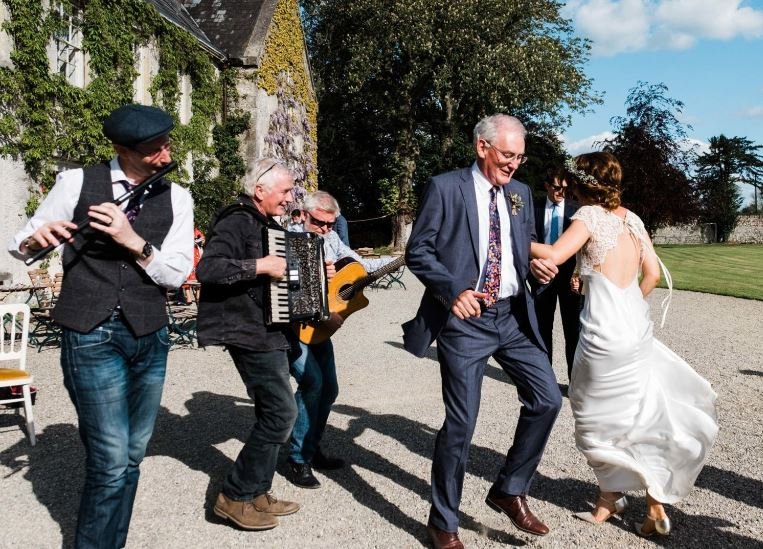The Claddagh ring symbolizes love, loyalty, and friendship. Originating from Claddagh, a village in Galway, Ireland, the ring features two hands holding a heart with a crown on top. This design represents the core values of Irish culture: friendship through the hands, love through the heart, and loyalty through the crown. Couples often exchange Claddagh rings during their wedding ceremonies or use them as engagement rings.

Wearing the Ring
Wear the Claddagh ring on your right hand with the heart facing outward to show you are in a relationship. If the heart faces inward, it signifies engagement. When worn on the left hand with the heart facing inward, it indicates marriage.
The Handfasting Ceremony: Ancient Ritual
Historical Practice
Handfasting involves binding the couple’s hands together with a ribbon or cord, symbolizing their union. This ancient Irish ritual, dating back to Celtic times, reflects a commitment to each other. Modern couples often incorporate handfasting into their ceremonies to honor this historical tradition.
Modern Adaptations
Personalize handfasting by choosing different colors and types of cords or ribbons, each representing various aspects of your relationship. Add special readings or blessings to the ceremony for a unique and personal touch.
The Bridal Procession and Music: Traditional Elements
Musical Significance
Irish weddings feature traditional folk tunes and lively jigs, enhancing the celebratory atmosphere. A live band or piper often performs these tunes, inviting guests to dance and join in the festivities.
Bridal Entrance
In traditional Irish weddings, the bride walks down the aisle accompanied by a piper or a traditional Irish melody. This custom adds elegance and authenticity, reflecting the cultural heritage of Ireland.
The Wedding Toast: Symbolic Celebrations
Traditional Toasts
During Irish weddings, the father of the bride or the best man typically makes a heartfelt wedding toast. This toast offers well-wishes and blessings for the couple’s future. The custom of toasting extends to the reception, where guests raise their glasses to celebrate the newlyweds.
Irish Toasts
Popular Irish wedding toasts include phrases such as, “May you have the hindsight to know where you’ve been, the foresight to know where you’re going, and the insight to know when you’re going too far.” These toasts reflect Irish humor and wisdom, adding a personal touch to the celebration.
The Cake Cutting Ceremony: Symbolic Gestures
Traditional Cake
The traditional Irish wedding cake is a rich fruitcake made with whiskey-soaked fruit and adorned with intricate decorations. This cake, a staple at Irish weddings, is usually served during the reception. Cutting the cake symbolizes the couple’s first task together as husband and wife.
Sharing the Cake
Share pieces of the cake with guests as a gesture of goodwill and hospitality. This tradition highlights the importance of community and celebration in Irish weddings.
The Wedding Blessing: Heartfelt Wishes
Traditional Blessings
Irish weddings often include a wedding blessing, a prayer or verse that asks for divine guidance and protection for the couple. A priest, family member, or friend usually recites these blessings, conveying wishes for a happy and prosperous future together.
Examples of Blessings
A popular Irish blessing reads: “May the road rise to meet you, may the wind be always at your back, may the sun shine warm upon your face, and may the rains fall soft upon your fields.” Such blessings capture Irish culture’s emphasis on well-wishing and positive sentiments.
Conclusion
Incorporate traditional Irish customs into your wedding to add a meaningful and authentic touch. From the Claddagh ring and handfasting ceremony to lively music and heartfelt toasts, these customs reflect Ireland’s rich heritage and cultural values. Embrace these traditions to celebrate your special day with a deep connection to Irish history and customs.

